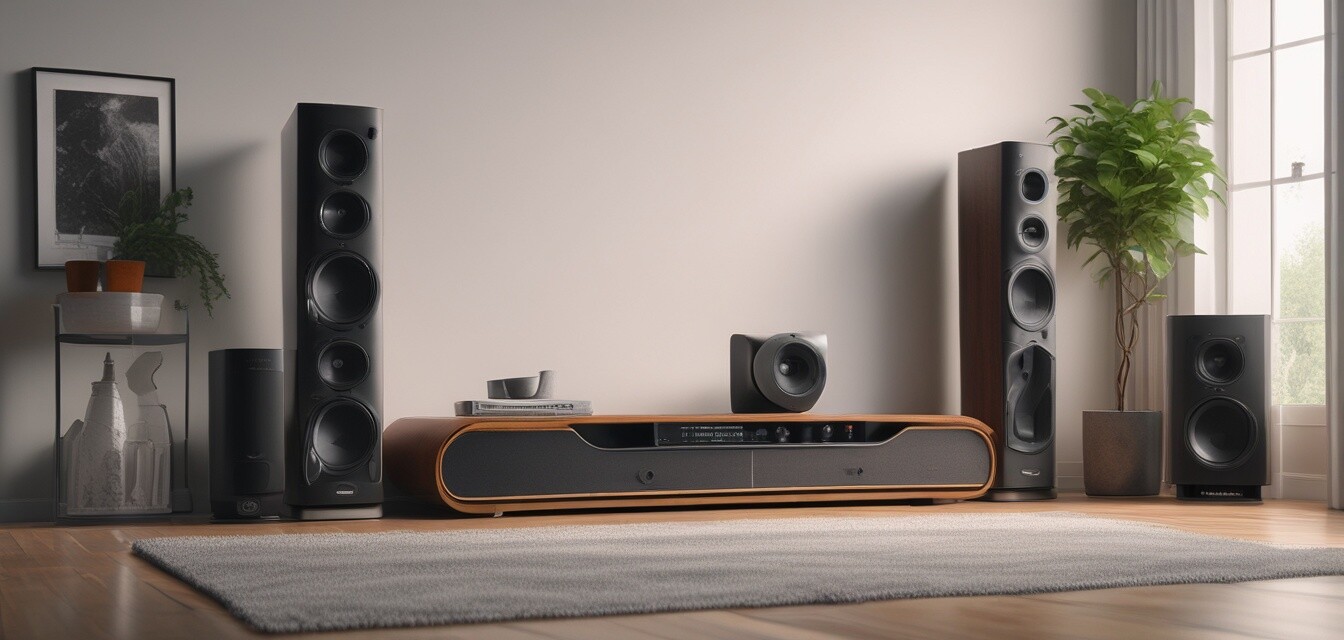
How to Transition from Stereo to Multi-Room Audio
Are you ready to enhance your listening experience by transitioning from a traditional stereo setup to a multi-room audio system? This guide walks you through the entire process, ensuring you enjoy your favorite tunes in every room of your home. In the age of digital audio streaming, making the switch is easier than ever, and with the right tools and knowledge, you can make your space a musical haven.
Key Takeaways
- Understand the difference between stereo and multi-room audio systems.
- Select the right devices and platforms for your needs.
- Learn how to set up a wireless network to support your audio system.
- Explore different ways to control your multi-room audio setup.
- Optimize your audio setup for better sound quality across rooms.
Understanding the Basics
Before diving into the transition process, it’s important to understand what exactly a multi-room audio system entails. Unlike traditional stereo setups, which provide sound from a singular source, multi-room audio systems consist of multiple speakers spread out across different rooms, all coordinated to deliver a seamless audio experience.
Benefits of Multi-Room Audio
- Convenience: Stream music across all rooms effortlessly.
- Flexibility: Play different music in different rooms or sync them all together.
- Enhanced Sound Quality: Enjoy improved acoustics by placing speakers strategically.
Step 1: Assess Your Current Setup
Begin by taking stock of your current stereo system. Understand which components you want to keep and which will need to be replaced or upgraded.
Components to Evaluate:
| Component | Keep/Replace |
|---|---|
| Receiver | Evaluate if it supports multi-room audio. |
| Speakers | Consider if they can be integrated into a multi-room system. |
| Audio Sources | Determine if they can connect to a multi-room platform. |
Step 2: Select a Multi-Room Audio System
Choosing the right system is crucial for a seamless transition. Here are important factors to consider:
- Compatibility: Ensure the system supports your existing devices.
- Audio Quality: Look for systems known for high fidelity sound.
- User Interface: Consider how easy it is to control your audio.
Recommended Platforms
Check out various platforms like Sonos, Google Home, and Amazon Alexa, each offering unique features for multi-room configurations. For more information on different audio gadgets, explore our Audio Gadgets category.
Step 3: Set Up Your Wireless Network
A solid wireless network is essential for multi-room audio. Follow these steps to ensure a robust connection:
- Ensure your router is in a central location for optimal coverage.
- Use a Wi-Fi mesh system if your home has dead zones.
- Check your internet speed to support multiple streams simultaneously.
Step 4: Install and Configure Your Speakers
Carefully install your speakers in the desired locations. Use the following tips:
- Place speakers at ear level for better sound.
- Consider the acoustics of each room when positioning.
- Utilize wall mounts for a cleaner look and better sound distribution.
Step 5: Connecting and Syncing Devices
Next, connect your audio devices to the network:
- Download the relevant app for your audio system.
- Follow the app instructions to connect devices to the network.
- Group speakers together in the app to create zones.
Step 6: Control Your Multi-Room Audio
Finally, learn how to control your audio system with ease. Here are some popular methods:
- Smartphone apps for on-the-go control.
- Voice commands through virtual assistants.
- Dedicated remotes for a traditional feel.
Optimization Tips for the Best Experience
Beginner’s Section: Tips for Enhancing Your Multi-Room Audio Experience
- Experiment with speaker placements – slight adjustments can impact sound quality.
- Regularly update your audio software for best performance.
- Try different audio settings and equalizer options for a tailored sound experience.
Pros
- Multi-room audio enhances your audio experience across your home.
- Flexibility in music choice and volume control in each room.
- Easy to scale with additional zones or speakers over time.
Cons
- Initial setup costs can be significant.
- Requires a reliable Wi-Fi network for optimal performance.
- Complexity may be overwhelming for beginners.
Conclusion
Transitioning from a stereo setup to a multi-room audio experience can greatly enhance your enjoyment of music and audio content. By following these steps—assessing your current setup, selecting the right system, ensuring a strong network, properly installing devices, and navigating controls—you’ll create a wireless audio environment in your home that is both enjoyable and modern. Ready to dive deeper? Visit our How-to Guides for more helpful insights!
